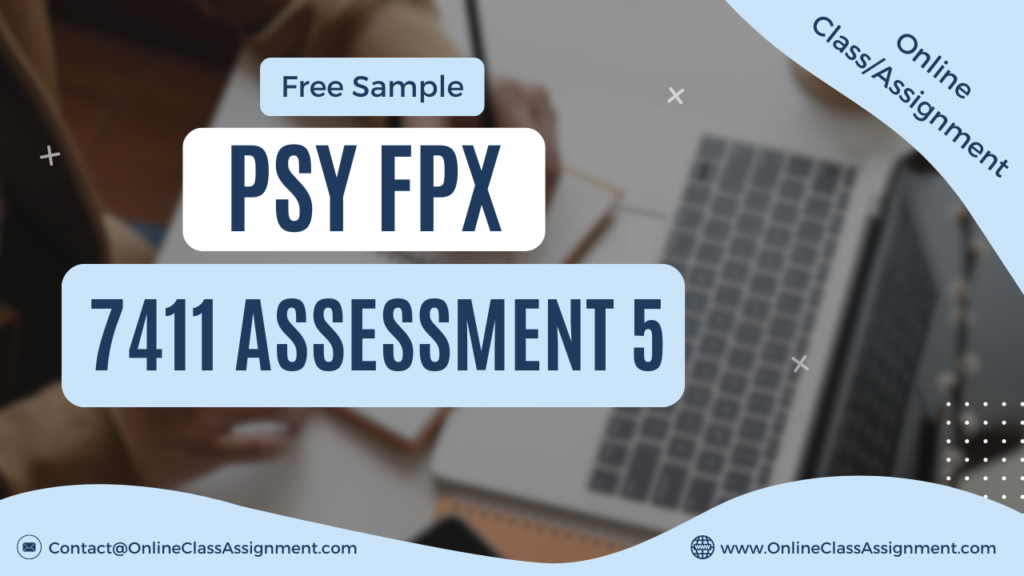
PSY FPX 7411 Assessment 5 Learning Theory in Psychology
Student Name
Capella University
PSY FPX 7411 Learning Theories in Psychology
Prof. Name
Date
Abstract
The brain operates as a natural learning entity, propelled by inner drive and predisposed towards problem-solving, skill acquisition, and pattern recognition (Brain-Based Learning, n.d.). Each person possesses a distinctive learning approach, reflecting their attitudes and behaviors. Various learning theories assist educators and individuals in comprehending these approaches, thus identifying strengths and weaknesses. This paper employs concepts from learning theory to illuminate a personal learning encounter, evaluates the significance of motivation, and distinguishes elements specific to the learning context.
Learning Styles and Theory
Learning commences as individuals link fresh information with previous experiences or knowledge. Neurons in the brain sprout dendrites, resembling branch-like fibers, which symbolize an individual’s grasp or recollection of a concept. As individuals acquire new skills or concepts, fresh neural networks form. Practice refines skills, notwithstanding inevitable errors, which serve as learning opportunities. Emotions notably influence the learning process; negativity can obstruct information assimilation. The learning process encompasses stages such as motivation, initial practice, skill enhancement, and mastery (Brain-Based Learning, n.d.). Importantly, individuals manifest varied learning styles, encompassing visual, auditory, and kinesthetic preferences (Willingham, Hughes & Dobolyi, 2015).
Multiple Intelligence Theory
The Multiple Intelligence Theory, pioneered by Howard Gardner, broadens conventional perspectives on intelligence by identifying eight distinct modalities, comprising visual, linguistic-verbal, logical-mathematical, kinesthetic, musical, interpersonal, intrapersonal, and naturalistic (Cherry, 2019). This framework encourages educators to tailor teaching methods to accommodate diverse learning styles. By presenting information in diverse formats, educators assist students with different abilities in expressing themselves effectively (Edutopia, 2016).
Personal Learning Situation
Reflecting on a past experience within mental health services, the author recounts their journey in mastering a new client database system, Synaps. Despite initial challenges due to auditory learning obstacles, hands-on practice facilitated comprehension and proficiency. This anecdote underscores the efficacy of customized learning approaches for kinesthetic learners like the author.
Motivation in Learning
Motivation profoundly influences behavior and learning outcomes. Intrinsic motivation arises from internal desires, while extrinsic motivation stems from external incentives (Theories in Motivation, 2011). Educators play a pivotal role in nurturing motivation by providing positive reinforcement and actively engaging students. Various motivational theories, including Attribution Theory, Goal Theory, and Self-Determination Theory, explicate the intricate connection between motivation and learning outcomes.
Evaluation of Case Study
Jack’s case illustrates the applicability of motivational theories in educational contexts. His aspiration to excel in sports to garner acceptance reflects intrinsic motivation, congruent with principles of Goal Theory and Self-Determination Theory. Understanding Jack’s learning preferences, such as kinesthetic learning, aids in tailoring interventions to bolster his academic and social advancement.
Components of Learning Situation
An individual’s attitude encompasses affective, behavioral, and cognitive components, influencing their learning trajectory (McLeod, 2018). Jack’s case exemplifies the interplay of these components, underscoring the importance of addressing emotional and behavioral factors in educational environments.
PSY FPX 7411 Assessment 5 Learning Theory in Psychology
Conclusion
Learning is a multifaceted process shaped by individual disparities and motivational factors. By acknowledging diverse learning styles and employing pertinent theories, educators can optimize learning outcomes and foster student success.
References
Brain-Based Learning. (n.d.). Retrieved from http://media.capella.edu/CourseMedia/ED7312/media_brain/ed7312u02_ts.html
Cherry, K. (2019). Gardner’s theory of Multiple Intelligences. Retrieved from https://www.verywellmind.com/gardners-theory-of-multiple-intelligences-2795161
Edutopia. (2016). Multiple Intelligences: what does research say? Retrieved from https://www.edutopia.org/multiple-intelligences-research
McLeod, S. A. (2018). Attitudes and behavior. Simply Psychology. https://www.simplypsychology.org/attitudes.html
Theories of Motivation. (2011). Innovative Learning. Retrieved from https://innovativelearning.com/educational_psychology/motivation/index.htm
PSY FPX 7411 Assessment 5 Learning Theory in Psychology
Three Theories of Motivation. (n.d.). Retrieved from http://media.capella.edu/coursemedia/ed7700/3motivation/3Motivation_ts.html
Willingham, D. T., Hughes, E. M., & Dobolyi, D. G. (2015). The scientific status of learning styles theories. Teaching of Psychology, 42(3), 266–271.
Get Capella University Free MS Psychology Samples
PSY FPX 5002
PSY FPX 6710
PSY FPX 5110
PSY FPX 6720
PSY FPX 6730
PSY FPX 6740
PSY FPX 7610
PSY FPX 6O15
